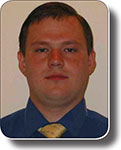CO2 storage in saline formation: the impacts of reservoir properties and geometry on CO2 trapping mechanisms
Diane Labregere A , Norhafiz Marmin A , Suzanne Hurter A , Johan Berge A and Alexander A. Lukyanov ASchlumberger Carbon Services
The APPEA Journal 49(1) 405-412 https://doi.org/10.1071/AJ08024
Published: 2009
Abstract
Effective geological storage of CO2 can be accomplished through a number of trapping mechanisms. Physical trapping is achieved through either CO2 being trapped under a structural closure or CO2 made immobile in the pore space, as residual saturation, by capillary action. Geochemical trapping, which might be regarded as a more secure mode of storage, is achieved through dissolution of CO2 in formation water and precipitation of carbonates. The dissolution rate depends on surface contact and is generally enhanced by greater CO2 plume movement. During site selection, a potential injection well location is commonly evaluated with respect to the proximity to potential leakage features. This paper investigates requirements for separation distance between CO2 injection location and potential leakage features in highly permeable steeply dipping brine reservoir settings. Reservoir models are simulated with a compositional code and sensitivity analyses performed with variations in reservoir permeability, hysteresis effects, and formation dip. Trapping mechanisms, over a timescale of several centuries, are illustrated as key indicators for containment and storage performance.
Study results suggest that the amount of CO2 trapped by dissolution and residual saturation is enhanced by a dynamically flowing plume. The simulation results demonstrate that the separation distance requirement typically envisaged in a worst-case reservoir geometry setting is commonly overly conservative, representing opportunity for further optimisation.
Numerical simulation is useful in addressing the complex reality of flow dynamics such as hysteresis in footprint prediction. Understanding CO2 plume migration scenarios relative to potential leakage risks, under various key reservoir key properties, is essential in storage containment and capacity assessments for storage site selection and development.

Diane Labregere graduated in geophysics from Ecole de Physique du Globe (University of Strasbourg, France) in 2003 and obtained a MSc in hydrogeology in 2004 at University of Paris VI, France. She started working for Schlumberger Water Services in late 2004, being responsible for adapting and testing in-house simulators that were initially designed for oil and gas applications for groundwater modelling. When she joined Schlumberger Carbon Services as a reservoir engineer towards the end of 2006, she became the main tester of the newly implemented ECLIPSE CO2 options and contributed to several CCS site selection studies for different oil and gas companies. Diane is now based in Brisbane, where she is working on several Australian CCS commercial projects. dlabregere@slb.com |

Norhafiz Marmin is a petroleum engineer with Schlumberger Carbon Services in Brisbane. His current work focusses on the application of petroleum engineering on CO2 geological storage. Prior to his current assignment, he assumed various production and reservoir engineering positions in Schlumberger organisations in Indonesia, Malaysia, Saudi Arabia and Vietnam. His interests include production enhancement, fracturing, well stimulation, well testing, nodal analysis, rock mechanics, and reservoir simulation. Marmin earned a bachelor degree with high honors in petroleum engineering from the University of Texas at Austin in 1997. nmarmin@perth.oilfield.slb.com |

Suzanne Hurter is principal reservoir engineer in Schlumberger Carbon Services looking into technical aspects of subsurface CO2 sequestration. Previously, she worked for Shell as a senior research scientist in the area of CO2 storage and difficult hydrocarbons. Earlier experience includes delivering large European projects for geothermal resources assessment, hydraulic fracturing for enhanced geothermal systems as well as research of volcanic hydrothermal systems and heat and fluid transport in sedimentary basins. She graduated with a BSc in physics and obtained a MSc in geophysics at the University of Sao Paulo (Brazil) and a PhD in geology at the University of Michigan (USA). SHurter@the-hague.oilfield.slb.com |

Johan Berge graduated from the University of Oslo, Norway in 1994 with an MSc in applied mathematics. He continued working as a research scientist at SINTEF in Oslo until 2000. Thereafter he had a one year position as a researcher at the University of Karlsruhe, Germany. He has been working on the numerical solution of partial differential equations for numerous application areas, such as porous media flow, water waves, vibration models for railways, trickle bed reactors, and also on the numerical solution on parallel machines. Since 2001 he has worked as a software engineer for Schlumberger Information Solutions, working on the development of the ECLIPSE reservoir simulators. Specifically, he has been involved in parallel computations, thermal and coal bed methane simulation and on the modelling of CO2 injection into saline aquifers. jberge@oslo.oilfield.slb.com |

Alexander A. Lukyanov is a software engineer with Schlumberger in ECLIPSE simulator development. He has worked, supported and maintained compositional and black oil models for reservoir simulation. His current work includes development of CO2 sequestration facilities in ECLIPSE. His specific interests include meshless simulations, shock waves physics and thermodynamics of irreversible processes. Alexander holds a MSc in applied mathematics, computer science and a PhD in physics and mathematics. ALukyanov@abingdon.oilfield.slb.com |


